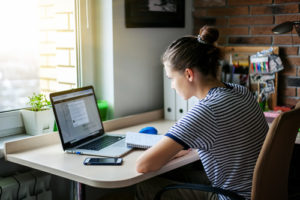By now, we are all familiar with the new coronavirus, or COVID-19, and have suddenly learned more about epidemiological terms like vectors, latency periods, and mortality rates than we ever thought we would. And if we adults are getting worried about a pandemic, it’s a safe bet that our kids are getting worried, too.
At times like these, I’m reminded of the wise words of one of my childhood heroes, Mister Rogers. He once said, “When I was a boy and I would see scary things in the news, my mother would say to me, ‘Look for the helpers. You will always find people who are helping.'”
Related content: 10 resources to keep learning going during a coronavirus outbreak
That’s good advice generally, but in the case of coronavirus, it means something particularly profound. Something a lot of us forget to do, even as adults is to “look for the experts.”
Tune out the talking heads, alarmist trolls, and social media chatter, and listen very carefully to what public health experts like Dr. Nancy Messonier of the Centers for Disease Control and Prevention are saying–that there is indeed, cause for concern–but not to panic.
It’s no longer “a question of if… but when” the virus will spread widely in the U.S., Dr. Messonier said. The CDC has already reported a coronavirus case in the U.S. in which the patient had not traveled to a part of the world known to have the disease. This is called “community spread” and, according to infectious disease specialist Dr. Dean Blumberg, “that means pretty much everybody’s at risk.”
As of the time of writing this, the disease has appeared in at least 70 countries and some experts have gone on the record stating that a global pandemic may be inevitable, and that the disease may be a public health issue for months, and possibly years, to come.
But the experts are also telling us that we’re not helpless in the face of a pandemic. Washing our hands for 20 seconds, coughing into our sleeves, avoiding crowds, and taking other common-sense precautions can go a long way to helping slow or stop the spread of disease. The bottom line is that we don’t need to panic–we just need prepare to go about our lives a little differently for a while.
Dr. Messioner has also said that parents should get ready for the possibility of school closures. We’ve already seen this in Washington state and in Japan. She also advised parents to contact their children’s school–as she has done–and ask them what plans they have in place for continued learning in case of a closure. The reality is that we may be looking at significant loss of classroom time for our young people as we keep them healthy and safe at home.
But that doesn’t have to mean learning stops. If students have access to a learning management system at home–and if schools have a policy and plans in place to continue educational activities online–there is no reason why teachers could not post instructional videos, assignments and tests with an expectation that students will do the work at home.
The good news is that many of our schools already use learning management systems. What schools must now do is use them differently–to deploy their existing e-learning resources to help students continue learning at home. But we need to put plans in place now so if large-scale school closures become a reality, the impact on our students will be as minimal as possible.
One school system ahead of the curve on this for some time is Georgia’s Gwinnett County Public Schools. The school system, the largest in the state, has had e-learning contingency plans in place for their students for several years now. GCPS “digital learning days” could allow students to continue learning even if schools are shut down for days or weeks at a time.
Digital learning days were rolled out during a snow day in the Gwinnett district. That day, there were 710,000 logins to the GCPS online learning platform and the school system handled 146,000 unique users and over 129 million interactions. Students continued to learn even though school was technically closed. One key lesson they learned was to practice with digital learning days – it is key to all stakeholders making the most of the experience and to work out the challenges for students, teachers, and parents.
Keeping our children learning like this does them all manner of good. First, it minimizes disruption to their routines, which can cause them so much stress. Second, it keeps them busy. And third, it builds resiliency by showing them that threats can be managed through rational, well-thought-out preparation and action.
What we need to be doing now, as adults and educators, is looking for the experts. We need to immediately begin learning from those schools that have put e-learning contingency plans in place.
